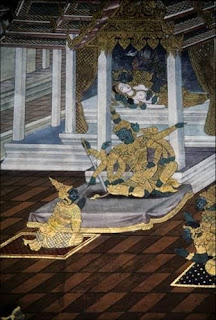GREAT KING RAVANA 300 AD
Vijaya 543 BC Upathissa 505 BC
Panduwasdeva 504 BC Abhaya 474 BC
Pandukhabaya 437 BC Mutaseeva 367 BC
Devanam Piyathissa 307 BC Uththiya 267 BC
Mahasiva
257 BC Sooratissa 247 BC
Sena & Guthtika 237 BC Asela 215 BC
Elara 205 BC Dutugemunu 161 BC
Saddhatissa 137 BC Tullaththana 119 BC
Langitissa 119 BC Kallatanagha 109 BC
Walagambha (First Time)
103 BC Poolahaththa 103 BC
Bhabhiya 100 BC Panaya Mara 98 BC
Piliya Mara 91 BC Datiya 90 BC
Walagambha (Second Time) 89 BC Mahasilu Mahatissa 76 BC
Choranaga 62 BC Tissa-Kudatissa 50 BC
Queen Anula 47 BC Kutakanna Tissa 42 BC
Bathiya,Bathika Abeya Bathiya Tissa 20 BC Maha Daatiya Maha Nagha 09 AD
Amanda Gamini 21 AD Kanirajanu Tissa 30 AD
Choolabeya 33 AD Seevali Queen 35 AD
Ilanagha 35 AD Chandamukasiva 44 AD
Yasalalaka Tissa 52 AD Sobaraja 60 AD
Wasabha 66 AD Wankanasikatissa 110 AD
Gajaba 113 AD Bathiya Tissa II 141 AD
Kanittatissa 110 Ad Choolanaga 193 AD
Kunchanaga 195 AD Sirinaga 196 AD
Choharikatissa 215 Ad Abeyanagha 236 AD
Sirinagha II 244 AD Vijayakumara 246 AD
Sanghatissa 247 AD Sirisanghabodhi 251 AD
Gothabeya
253 AD Detutissa I 266 AD
Mahasen 276 AD Sirimevan 303 AD
Detutissa II 331 AD Buddhadasa 340 AD
Upatissa I 369 AD Mahanama 410 AD
Soththisena 432 AD Wattagrahaka 432 AD
Miththasena 433 AD Pandu 434 AD
Parindha Kudaparindha
Tirithara Dhatiya
Peetaya Dathusena 459 AD
Kasyapa 477 AD Mugalan 495 AD
Kumaradasa 512 AD Keerthisena 521 AD
Seeva 521 AD Upatissa II 521 AD
Silaakala 522 AD Dhatappabhuthi 535 AD
Mugalan II 535 AD Kithsiri Mevan 555 AD
Mahanaga 573 AD Agbho I 575 AD
Agbho II 608 AD Sangatissa 618 AD
Mugalan III 618 AD Aseegrahaka 623 AD
Agbho III (First Time) 632 AD Pettatissa III 632 AD
Agbho III (Second Time) 632 AD DathasivaI 648 AD
Kasyapa II 650 AD Dappoola I 659 AD
Hatthadasa
659 AD Agbho IV 667 AD
Dattha 683 AD Hatthadatha 684 AD
Manavamma 684 AD Agbho V 719 AD
Kasyapa III 725 AD Mahinda I 731 AD
Agbho VI 733 AD Agbho VII 772 AD
Mihidhu II 778 AD Dappoola II 797 AD
Mihidhu III 802 AD Agbho VIII 805 AD
Dappoola III 816 AD Agmho IX 831 AD
Sena I
833 AD Sena II 853 AD
Udaya II 887 AD Kasyapa IV 898 AD
Kasyapa V 915 AD Dappoola IV 924 AD
Dappoola V 924 AD Udaya II 935 AD
Sena III 938 AD Udaya III 946 AD
Sena IV 952 AD Mihidhu IV 955 AD
Sena V 972 AD Mihidhu V 982 AD
Vijayabahu I 1055 AD Jayabahu I 1110 AD
Vikramabahu 1110 AD Gajaba II 1131 AD
Maha Parakramabahu I 1153 AD Vijayabahu II 1186 AD
Mihindu IV 1187 AD Nissankamalla 1187 AD
Veerabahu 1196 AD Vikramabahu II 1196 AD
Chodaganga 1196 AD Queen Leelavathi 1197 AD
Sahasamalla 1200 AD Queen Kalyanavathi 1202 AD
Dharmashoka 1210 AD Anikanga 1210 AD
Lokeshvara 1211 AD Parakramapandu 1212 AD
Kalinga Maga
1215 AD Prakramabahu III 1287 AD
Vijayabahu III 1220 AD
Parakramabahu II 1234 AD
Vijayabahu IV 1267 AD
Buvanekabahu I (Yapahuva) 1270 AD
Prakramabahu III (P'naruva) 1287 AD Buvanekabahu II 1293 AD
Pandita Parakramabahu IV 1302 AD Buvanekabahu III
Vijayabahu V
Pandita Parakramabahu IV 1302 AD Buvanekabahu IV 1341 AD
Parakramabahu V 1344 AD Buvanekabahu III
Vikramabahu III 1357 AD Buvanekabahu V 1374 AD
Veerabahu II 1392 AD Veera Alakesavara 1397 AD
Parakramabahu V 1412 AD Jayabahu II 1467 AD
Bvanekabahu VI 1472 AD Parakrambahu VII 1480 AD
Veera Parakramabahu VIII 1484 AD Dharma Parakramabahu IX 1508 AD
Vijayabahu VII 1510 AD Buvanekabahu VII 1522 AD
Dharmapala 1551 AD Mayadunne (Sithavaka) 1521 AD
Rajasinhe I 1557 AD
Don Philip 1591 AD Vimala Dharmasooriya I 1591 AD
Senarath 1604 AD Rajasinhe II 1635 AD
Vimala Dharmasooriya II 1687 AD Narendrasinhe 1707 AD
Vijaya Rajasinhe 1739 AD Keerthi Sri Rajasinhe 1747 AD
Rajadi Rajasinhe 1782 AD Sri Vikrma Rajasinhe 1798 AD

























